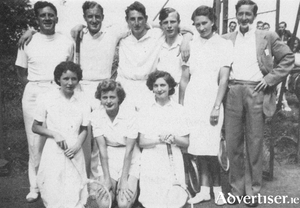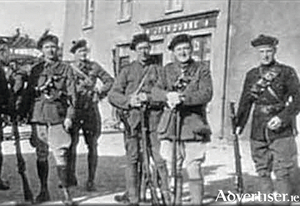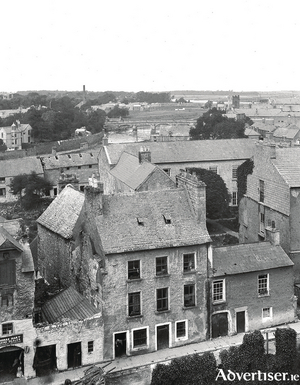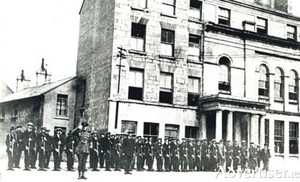Search Results for 'County Club'
7 results found.
Galway Lawn Tennis and Croquet Club

One hundred and twenty five years ago this month, at a meeting in the Royal Hotel, a new and rather exclusive club was formed bearing the title ‘The Galway Lawn Tennis and Croquet Club’. Initially, it was proposed that they play tennis at Glenarde (where the Ardilaun Hotel is today) but that their stated intention was to acquire land specifically to lay it down for proper tennis and croquet.
An Garda Síochána, the early years in Galway

After the truce, the RIC handed over its barracks to the Irish Free State. One hundred years ago this month, the Government set up An Garda Síochána, an unarmed civic police force. Unfortunately, the first group of gardaí who arrived in Galway by train had no barracks to go to, the Eglinton Street headquarters having been destroyed in an arson attack. A search began for some place to house the 23 gardaí and that evening, they managed to find accommodation in the County Club. They stayed there for almost a year.
Friends in strange places.

Our friend ‘Captain H’ who had ingeniously planted a dictaphone in the confessional under the stairs in the Town Hall prison, was up to his old tricks again. Somehow he had managed to plant a ‘friendly’ Sergeant Gates who chatted and smiled, and was a friend to all, and dangerously caught numerous snatches of conversation from the hundreds of prisoners within. These were reported to Captain H.
When cricket was 'alive ho in the west'
The 1880s was a watershed in the history of sport in Ireland. Soccer's All-Ireland governing body was established in Belfast in 1880 and during that decade the sport began to spread out from Ulster and scatter throughout the island. The first set of rules for rugby were drawn up in England in 1845, but the sport did not gain much traction in Ireland until the 1880s, a mere 10 years after the first game was played on Irish soil. The sport’s managing body, the Irish Rugby Football Union, was founded in 1879. The Golfing Union of Ireland was established in 1891, and though the game was being played in Ireland prior to that date, it had not attracted a Mayo following. The first golf club in Connacht was only founded in 1892. In 1884, the Gaelic Athletic Association was formed with a view to promoting Ireland’s native games. All of these sports have grown to become extremely popular in Mayo today but one sport, once arguably the most popular organised sport in the county, has virtually disappeared.
Market Street, 1880, a bird’s eye view

This photograph is part of the Clonbrock Collection in the National Library, and was taken from the tower of St Nicholas’ Church in 1880, looking over Market Street. This panoramic view extends as far as the river. The chimney you see on the horizon was that of Persse’s Distillery. In the distance (you probably will not be able to see it in this reproduction) is the Clifden railway embankment running along the river bank. The building that is now the County Club is near the top left of the picture, the tower of the Mercy Convent near the top right.
St Patrick’s Day parade in Galway, 1916

This parade started from the Square in the following order: Eyre Square North – Industrial School Band; Galway Urban District Council; Galway Board of Guardians; Students of UCG; AOH. Eyre Square East – The Monastery School Fife and Drum Band; UIL; Town Tenant’s League; Galway Woollen Manufacturing Co; and the Irish National Foresters.
Nineteenth century Galway elections
Elections in the 19th century were a great deal more lively, entertaining, and violent than those of the present day.

